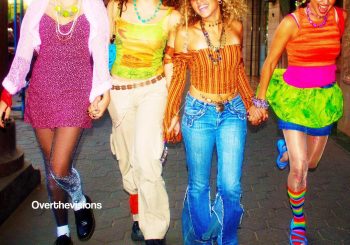There’s an undeniable magic to a signature style. It’s not just about dressing for the occasion; it’s about dressing for the culture, shaping the aesthetic identity of a country or community.
Arab women have been instrumental in shaping this visual and aesthetic culture, leaving an undeniable mark on their nation’s identity. Female Arab artists weren’t just creating beauty; they were also crafting a cultural narrative. Everything about them – from their attire to their language, and even the music they produced – embodied a timeless aesthetic.
The golden age of Arab cinema and music birthed a generation of icons whose influence transcends time. These legendary women were trendsetters and cultural ambassadors who left an indelible mark on the Arab world. More than just their music and movies, their signature styles continue to inspire and captivate audiences even today.
Here are four of these legendary Arab style icons, whose impact on culture continues to resonate:
Umm Kalthoum
Umm Kulthum’s stage presence was legendary, a unique blend of shimmering gowns, iconic silk handkerchiefs, and signature cat-eye sunglasses. It was an audacious statement of power and individuality.
But her fashion sense wasn’t mere glamour. Her gowns, often dotted with Egyptian floral patterns and folk art motifs, paid homage to her roots and the style of rural women in Egypt. This fusion of the modern and traditional became a trademark, echoing her music and cultural impact.
Even today, Umm Kulthum’s influence remains unchallenged. Her style continues to inspire designers and artists, such as Dutch-Moroccan-Egyptian model Imaan Hammam, one of fashion’s most popular models, who recently paid tribute to the iconic singer by launching her own capsule eyewear collection with Moroccan label Port Tanger.
Leila Mourad
Leila Mourad was more than just a silver screen siren; she was a true fashion icon whose radiance mesmerized audiences throughout the Arab world.
One of the most unforgettable pieces in Mourad’s fashion repertoire was the dazzling Chanel gown she wore in the film Habib El Roh (1951). Tailored specifically for her by the legendary fashion house itself, this exquisite creation embodied pure Parisian chic. The gown’s delicate fabric and impeccably crafted details solidified her image as a style pioneer.
Her collection of fur coats also became synonymous with her status as the “crème de la crème” of Egyptian cinema. These fur coats, draped with effortless grace, exuded an aura of sophistication and glamour that few could match.
Her meticulously styled hair, always perfectly put together, became an iconic element of her image. Her signature hairstyle showcased sleek, voluminous waves that framed her face, often adorned with elegant pearls, exuding a natural femininity.
Sabah
At first glance, Sabah’s iconic blonde hair and dazzling gowns might evoke the archetypal Hollywood bombshell. Yet Sabah’s fashion was an audacious act of self-expression, a meticulously crafted tool to communicate her intellect, emotions, and vibrant personality.
More than just glamorous frocks, Sabah’s “outsized image” spoke volumes, particularly to younger women. Her flamboyant costumes and hairdos, often defying gravity and conventional elegance, challenged the restrictive norms of femininity.
In an era where women were often expected to be soft and reserved, she embraced audacity and extravagance.
Fairuz
Fairuz’s signature look is exemplified by three key elements: the retro-maxi sunglasses and scarf combo, the flamboyant kaftan, and the ethereal head crown jewelry.
Fairuz’s iconic oversized sunglasses, paired with a flowing chiffon scarf, exuded an air of cool sophistication. This simple yet stylish combination has become synonymous with Fairuz, instantly recognizable and chic.
Fairuz’s signature kaftans were also an ode to cultural opulence. The flowing, loose-fitting garments, often adorned with intricate embroidery, embody the essence of Lebanese and Arab fashion.
Her signature head crown jewels added a touch of ethereal beauty, emulating the celestial quality of her voice. They elevate her stage presence to a mythical level, particularly when she sings about spiritual and religious themes.
These Arab culture icons proved that fashion is a language in itself, conveying emotions, cultural identity, and artistic vision, leaving an indelible mark on the world of style and music.





Comments (0)